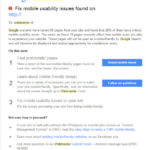When asked what I do for small businesses, I often open asking the question:
“Would you like your website to be more than an online business card?” This usually triggers a resounding “Yeah, baby!”
What I hear between the lines in their “yeah baby”, 9 times out of 10 is frustration. Why? Because most of us are on the eternal quest for more traffic to our website, leading to more conversions from that traffic. Not many of us, save the few focussed traffic guru’s” like Derek Halpern and Ana Hoffman, are ever satisfied with the amount of traffic to their website or blog, often explained when equating to traffic noise this way:
rrribbit…rrribbit….rrrribbit…
Without getting too technical and risking the old click off, basically what has happened in the past few years is that Google, in an effort to ensure a quality search engine browsing experience for their users, has been slowly at first, back at the end of 2011, and more recently much more often, changing their algorithms by rewarding websites and blogs whose content is continuously updated and changed, and “punishing” those sites whose content has not been altered since the day they launched their websites. They even have a name for it…not surprisingly, it’s called…wait for it…”Google Fresh”. More here on that.
We talked about the importance of having great content last time, and now I’m here to tell you that for the past couple of years, websites and blogs with “fresh” (time stamped) content” are being indexed more often and pushed up the organic ranks of the search page, and those who haven’t switched much up are not being given as much search CRED.
Why? Because when updating, adding and changing content, it’s assumed (by Google) that THIS business, being represented online by THIS website, is doing its’ utmost to give their visitors a quality experience on their site.
The reasoning makes sense. They figure that websites with “stale” static page content are representing the same in their businesses, rightly so, or not.
So, knowing this info,
You might have heard the buzz about WordPress, but if not let me talk a bit about it. WordPress is a free, and open source blogging tool and a Content Management System (CMS) according to Wikipedia. And then Wiki gives a whole lot more info on its’ benefits.
I talk about it here because I feel that using it to create your website or blog is advantageous for many reasons, not the least of which is because Google loves WordPress.
Why would Google care about what framework your website is built on?
Google cares and favors WordPress frameworks because WordPress was originally created in 2003 as a blogging platform.
How does a blogging platform differ from a regular old website platform?
Well, a blogging platform is designed to make it simple for the layperson, like you and me, to be able to post regularly and easily. CMS platforms do not require html coding as most website development used to just a few years ago. It’s designed to offer a way for anyone to update his or her “weblog” without having to be particularly tech savvy at all.
Since its inception, WordPress has gotten a tad more sophisticated, granted, and is being used by smart business owners as their website and or blog, interchangeably, which is a beautiful thing. You can now choose from hundreds of “themes” from an array of open source providers. Personally I love the ease and fabulous choices that Studio Press offers, and design most of my clients’ sites from their themes. Some simple themes remain free, others you will pay a bit for, depending on the plug-ins widgets, design and simple coding choices, (most under $100) but the bottom line is that with a WordPress platform, updating content, and keeping it “fresh” is a no brainer. Its’ coding is search engine friendly to boot.
By adding your content to posts rather than pages you are also encouraging interaction on your site, which is good! Remember when I discussed the importance of commenting in the first post of this traffic series? With the blogging format, you are opening up your site to comments (more fresh content), interacting with your fans, and building relationships. Your site becomes more of a 2 way street, rather than a 1 way street.
If the thought of this scares you, know that the comment functions can be disabled, and you always have the options of screening and approving, or not, the comments that come through. I ALWAYS, filter my comments.
I only work with WordPress for my clients and my own blog, embedded in my site is WordPress as well. (Keep your eyes open for the debut of my own new site this summer…it’s in the works). With WordPress I’m able to teach my clients how to get into their “back end”, update content and navigate their dashboards themselves. It’s empowering, fun, and I encourage them to do it as often as possible so that it becomes second nature.
At the very least, if you’re not ready for the big move yet, make sure that your blog is embedded on your existing site—not as a separate URL, so that when you post a new post, it will credit your website as a whole and the fresh content will be recognized, as long as you’re tagging and using keywords, by the search engines.
The days of being slave to your Webmaster are OVER, people! If you are still paying your website developer to make minor changes on your site, I highly encourage you to take a deep breathe and make the switch to WordPress. Once you learn it, it is not hard. Trust me. If I can do it, so can you.
Not only will you save money by not having to shell out money every time you want to dot an i, but your website, once you start “working it” (we’ll be “working it” more specifically in the next post) will be recognized by Google and ranked higher on all of the search engines as a whole, found easier, and lead traffic right to you.
After all, if they can’t FIND you, how can they hire you?
Do you have fresh content “issues”? Let me know down below and lets see if we can get rid of them










Love what you’re doing Ana!
Hi Lori, It really depends on what your goals are for your blog. If you’re blogging for traffic and looking to monetize your blog there is no better platform than WordPress. Here’s a good article showing the advantages of WordPress over Blogspot from someone who made the switch: http://bit.ly/17Q7YE